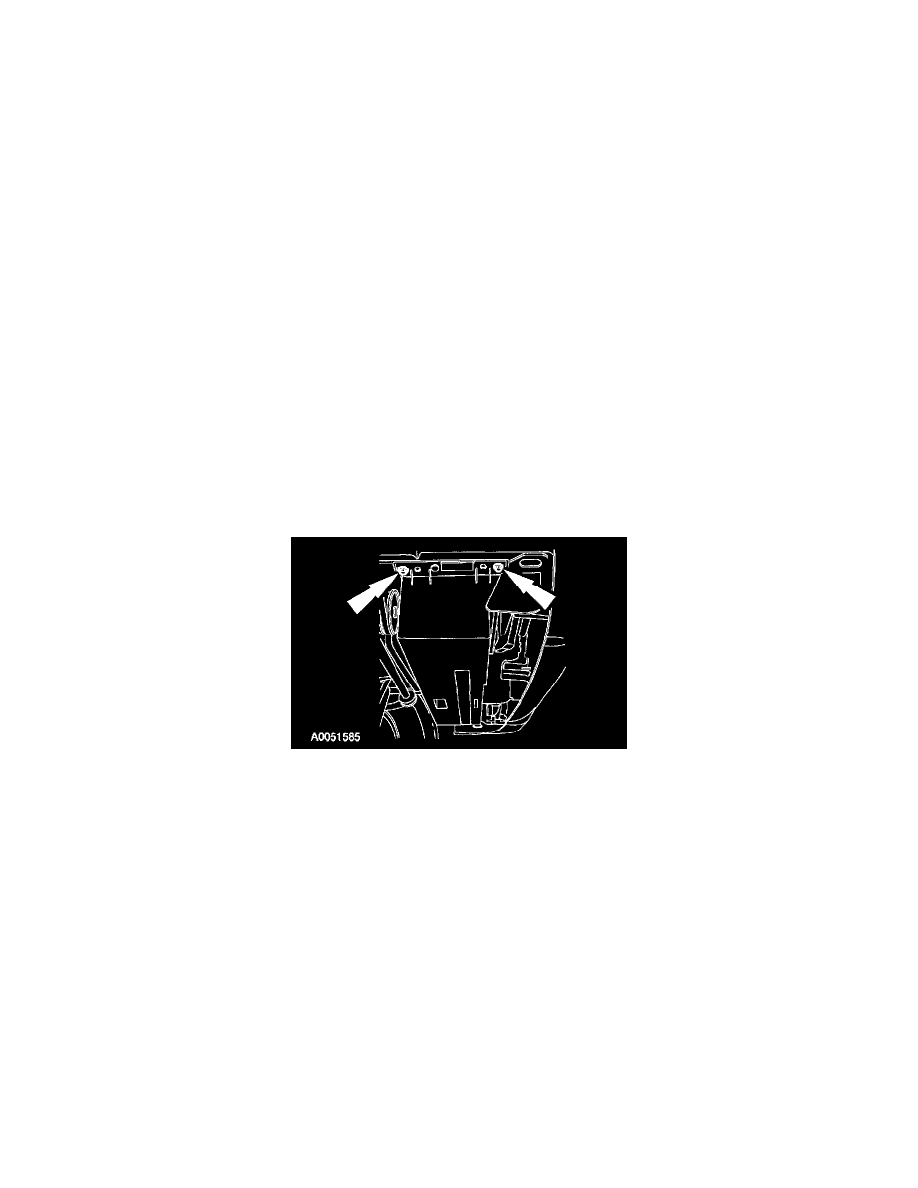B3000 V6-3.0L (2007)

Coolant: Service and Repair
Engine Coolant Replacement
ENGINE COOLANT REPLACEMENT
Warning:
^
Never remove the pressure relief cap while the engine is operating or when the cooling system is hot. Failure to follow these instructions
can result in damage to the cooling system or engine or personal injury. To avoid having scalding hot coolant or steam blow out of the
coolant reservoir when removing the pressure relief cap, wait until the engine has cooled, then wrap a thick cloth around the pressure
relief cap and turn it slowly. Step back while the pressure is released from the cooling system. When you are sure all the pressure has
been released, (still with a cloth) turn and remove the pressure relief cap. Failure to follow these instructions can result in personal
injury.
Caution:
^
The coolant must be recovered in a suitable, clean container for reuse. If the coolant is contaminated it must be recycled or disposed of properly.
Note:
^
The addition of Cooling System Stop Leak Pellets VC-6, darkens engine coolant from yellow to golden tan.
Note:
^
Do not add Specialty Orange Engine Coolant VC-2. Mixing coolants can degrade the coolant's corrosion protection.
Note:
^
Less than 80% of the coolant capacity can be recovered with the engine in the vehicle. Dirty, rusty or contaminated coolant requires replacement.
Draining
1. Release the pressure in the cooling system by slowly turning the pressure relief cap one half to one turn counterclockwise to the first stop on the
filler neck. When the pressure has been released, remove the pressure relief cap.
2. Raise and support the vehicle.
3. Remove the lower radiator cover.
4. Place a suitable container below the radiator drain cock. Drain the coolant.
5. Close the radiator draincock when finished.
Filling
Caution:
^
Engine coolant provides freeze protection, boil protection, cooling efficiency and corrosion protection to the engine and cooling components. In
order to obtain these protections, the engine coolant must be maintained at the correct concentration and fluid level. When adding engine coolant,
use a 50/50 mixture of engine coolant and clean, drinkable water.
^
To maintain the integrity of the coolant and the cooling system:
^
Add Premium Gold Engine Coolant VC-7-A (in Oregon VC-7-B) or equivalent (yellow color). Use the same coolant that was drained from the
cooling system. Do not mix coolant types.
^
Do not add Specialty Orange Engine Coolant VC-2 or an equivalent. Mixing coolants can degrade the coolant's corrosion protection.
^
Do not add alcohol, methanol, brine or any engine coolants mixed with alcohol or methanol antifreeze. These can cause engine damage from
overheating or freezing.
^
Do not mix recycled coolant unless it meets the requirements of specification ESE-M97B44-A or WSS-M97B51-A1. Not all coolant recycling
processes meet proper specifications. Use of such coolant can harm the engine and cooling system components.
Note:
^
The addition of Cooling System Stop Leak Pellets VC-6, darkens Premium Gold Engine Coolant VC-7-A from yellow to golden tan.
